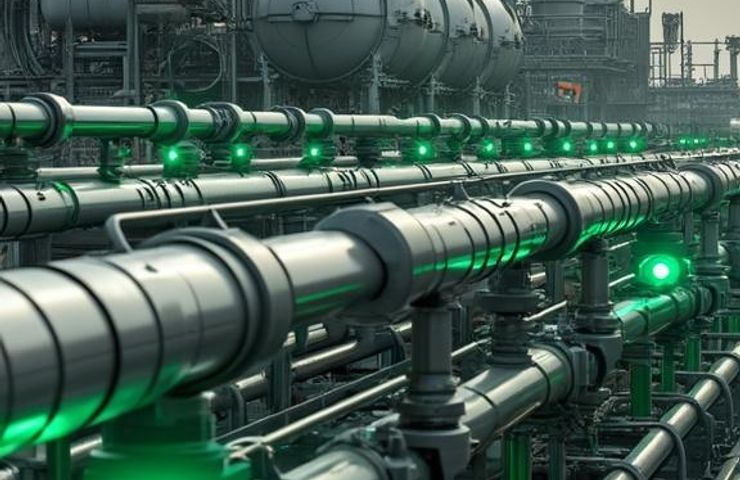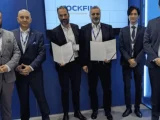
Germany’s Push for Green Gas Quota Aims to Boost Hydrogen Production Market
October 27, 2025On October 24, 2025, the Verband Deutscher Maschinen- und Anlagenbau (VDMA) threw its weight behind a binding green gas quota in Germany. It wasn’t just another policy note; this move signals a real turning point in the country’s industrial decarbonization roadmap. By locking in demand for green hydrogen and biomethane, Germany is doubling down on its promise to hit climate neutrality by 2045.
Strategic Implications
With over 3,600 mechanical engineering firms under its umbrella, the VDMA has serious clout when it comes to shaping policy. Their ask? Force gas suppliers to blend in steadily rising shares of renewable gases. Give the market that kind of reliable demand signal, and watch investment pour into electrolyzers, biomethane plants, and the broader hydrogen infrastructure. It’s a classic case of “build it, and they will come.”
The proposal ramps up the green gas requirement year by year, easing the pressure on projects stuck on the sidelines because of higher costs compared to fossil gas. Backers argue this is crucial not only to hit the EU’s RED III targets but also to stay in line with Germany’s Federal Climate Protection Act—and keep German industry competitive on the global stage.
Why Now?
Germany’s Energiewende story began with wind and solar in the early 2000s, but now the spotlight is on the gas sector’s carbon footprint. The first greenhouse gas reduction quota kicked off in 2021, followed by tougher rules in 2025 under RED III, targeting a 53% cut in transport emissions by 2040. Yet, over 90% of the gas grid is still fossil-based. That’s why enthusiasts are pushing for a dedicated green gas quota—to finally shake up the status quo.
Technical Snapshot
At its heart, green hydrogen comes from electrolysis powered by renewable electricity—zero-emission production, right out of the gate. Then there’s biomethane, produced by anaerobic digestion of organic waste. Both plug straight into existing pipelines and storage facilities, meaning we can sidestep wholesale infrastructure rebuilds. Talk about making the most of what we’ve got.
Key Takeaways
- Guaranteed demand: A quota underwrites a stable market for green gases.
- Cost reduction pathway: Scaling up brings down electrolysis CAPEX and OPEX.
- Energy security: Local production cuts dependence on imported fossil gas.
- Market transformation: Accelerates the phase-out of conventional natural gas.
- Regulatory challenges: Robust certification is a must to stop fraud.
Industry watchers note that costs for hydrogen production are trending downward. But without solid policy support, many projects still can’t get financiers on board. Embedding this quota in law sends a clear message to equipment makers, investors, and end-users: the hydrogen economy is here to stay.
Comparative Landscape
Germany isn’t alone. The UK has rolled out similar blending mandates, and Brussels is debating its own EU-wide green gas quota. Still, Germany’s massive manufacturing base and export prowess mean homegrown leadership could turn into global expertise—particularly in machine tools and electrolyzer tech.
Financial Outlook
Early estimates suggest industrial gas prices might tick up by less than 5%—a small premium for long-term gains. And the real winners? Companies that move fast in hydrogen production, especially in hard-to-abate sectors like steel, chemicals, and heavy transport.
Industrial Pulse
Steel mills, chemical plants, you name it—they’re all eyeing the quota as a lifeline for securing green feedstocks. Together, these industries account for over 30% of Germany’s gas consumption. Locking in green hydrogen and biomethane supply could completely reshape their procurement playbooks and shield them from volatile global gas prices.
Energy security has been top of mind since the 2022 supply shocks. Cutting reliance on a handful of fossil gas exporters is a no-brainer. A vibrant green gas market means tapping into domestic renewable and biomass resources—win-win for stability and sustainability.
Broader Impacts
This quota isn’t just about kilowatt-hours:
- Job creation in electrolysis manufacturing, project development, and certification services.
- Skills upgrade as technicians retrain for hydrogen-specific roles.
- Consumer effects with a slight bump in tariffs before economies of scale kick in.
- Regulatory burden thanks to new tracking systems to ensure transparency and avoid double-counting.
But the VDMA isn’t stopping at policy papers. Their “Hydrogen to go” initiative and flagship Hydrogen Technology World Expo are all about getting suppliers, grid operators, and end-users in the same room to fast-track pilots and streamline supply chains. It’s about action, not just talk.
Frontier Economics, working for the German gas and water association, modeled a route to 100% green gases by 2045. Their blueprint calls for interim targets, regular check-ins, and safeguards against market shocks—elements the VDMA wants mirrored in the final law.
Looking Ahead
Of course, it won’t be smooth sailing. Getting electrolyzer approvals can drag on for over a year, land and grid access often turns into a tug-of-war, and financing for merchant hydrogen plants is still finding its footing. The VDMA says fast-track permits and standardized offtake agreements could cut development time by up to 40%.
With the German government set to refine the quota’s details in 2026, everyone’s watching for rollout timelines, penalty schemes, and which gases make the cut. If all goes well, double-digit shares of green gases could be in the grid by 2030—paving the way for full decarbonization by mid-century.
Bottom line? The VDMA’s endorsement makes it crystal clear: scaling green hydrogen and biomethane is non-negotiable if Germany wants to hit its climate targets and keep its engineering edge.


 With over 15 years of reporting hydrogen news, we are your premier source for the latest updates and insights in hydrogen and renewable energy.
With over 15 years of reporting hydrogen news, we are your premier source for the latest updates and insights in hydrogen and renewable energy.